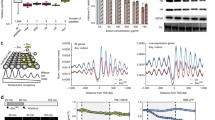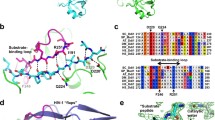Abstract
DNA metabolic processes such as DNA replication, recombination, and repair are fundamentally important for the maintenance of genome integrity and cell viability. Although a large number of proteins involved in these pathways have been extensively studied, many proteins still remain to be identified. In this study, we isolated DNA-binding proteins from Saccharomyces cerevisiae using DNA-cellulose columns. By analyzing the proteins using mass spectrometry, an uncharacterized protein, Cmr1/YDL156W, was identified. Cmr1 showed sequence homology to human Damaged-DNA binding protein 2 in its C-terminal WD40 repeats. Consistent with this finding, the purified recombinant Cmr1 protein was found to be intrinsically associated with DNA-binding activity and exhibited higher affinity to UV-damaged DNA substrates. Chromatin isolation experiments revealed that Cmr1 localized in both the chromatin and supernatant fractions, and the level of Cmr1 in the chromatin fraction increased when yeast cells were irradiated with UV. These results suggest that Cmr1 may be involved in DNA-damage responses in yeast.
Similar content being viewed by others
References
Bean, J.M., Siggia, E.D., and Cross, F.R. 2005. High functional overlap between MluI cell-cycle box binding factor and Swi4/6 cell-cycle box binding factor in the G1/S transcriptional program in Saccharomyces cerevisiae. Genetics 171, 49–61.
Brohée, S., Janky, R., Abdel-Sater, F., Vanderstocken, G., André, B., and van Helden, J. 2011. Unraveling networks of co-regulated genes on the sole basis of genome sequences. Nucleic Acids Res. 39, 6340–6358.
Choi, D.H., Oh, Y.M., Kwon, S.H., and Bae, S.H. 2008. The mutation of a novel Saccharomyces cerevisiae SRL4 gene rescues the lethality of rad53 and lcd1 mutations by modulating dNTP levels. J. Microbiol. 46, 75–80.
Dantuma, N.P., Heinen, C., and Hoogstraten, D. 2009. The ubiquitin receptor Rad23: at the crossroads of nucleotide excision repair and proteasomal degradation. DNA Repair 8, 449–460.
Donovan, S., Harwood, J., Drury, L.S., and Diffley, J.F. 1997. Cdc6p-dependent loading of Mcm proteins onto pre-replicative chromatin in budding yeast. Proc. Natl. Acad. Sci. USA 94, 5611–5616.
Groisman, R., Polanowska, J., Kuraoka, I., Sawada, J., Saijo, M., Drapkin, R., Kisselev, A.F., Tanaka, K., and Nakatani, Y. 2003. The ubiquitin ligase activity in the DDB2 and CSA complexes is differentially regulated by the COP9 signalosome in response to DNA damage. Cell 113, 357–367.
Hellauer, K., Lesage, G., Sdicu, A.M., and Turcotte, B. 2005. Large-scale analysis of genes that alter sensitivity to the anticancer drug tirapazamine in Saccharomyces cerevisiae. Mol. Pharmacol. 68, 1365–1375.
Higa, L.A., Wu, M., Ye, T., Kobayashi, R., Sun, H., and Zhang, H. 2006. CUL4-DDB1 ubiquitin ligase interacts with multiple WD40-repeat proteins and regulates histone methylation. Nat. Cell Biol. 8, 1277–1283.
Huh, W.K., Falvo, J.V., Gerke, L.C., Carroll, A.S., Howson, R.W., Weissman, J.S., and O’shea, E.K. 2003. Global analysis of protein localization in budding yeast. Nature 425, 686–691.
Lee, C.H., Shin, Y.K., Phung, T.T., Bae, J.S., Kang, Y.H., Nguyen, T.A., Kim, J.H., Kim, D.H., Kang, M.J., Bae, S.H., and et al. 2010. Involvement of Vts1, a structure-specific RNA-binding protein, in Okazaki fragment processing in yeast. Nucleic Acids Res. 38, 1583–1595.
Lee, J. and Zhou, P. 2007. DCAFs, the missing link of the CUL4-DDB1 ubiquitin ligase. Mol. Cell 26, 775–780.
Matsuda, N., Azuma, K., Saijo, M., Iemura, S., Hioki, Y., Natsume, T., Chiba, T., Tanaka, K., and Tanaka, K. 2005. DDB2, the xeroderma pigmentosum group E gene product, is directly ubiquitylated by Cullin 4A-based ubiquitin ligase complex. DNA Repair 4, 537–545.
Prakash, S. and Prakash, L. 2000. Nucleotide excision repair in yeast. Mutat. Res. 451, 13–24.
Scrima, A., Fischer, E.S., Lingaraju, G.M., Böhm, K., Cavadini, S., and Thom. 2011. Detecting UV-lesions in the genome: The modular CRL4 ubiquitin ligase does it best! FEBS Lett. 585, 2818–2825.
Scrima, A., Konícková, R., Czyzewski, B.K., Kawasaki, Y., Jeffrey, P.D., Groisman, R., Nakatani, Y., Iwai, S., Pavletich, N.P., and Thom. 2008. Structural basis of UV DNA-damage recognition by the DDB1-DDB2 complex. Cell 135, 1213–1223.
Sugasawa, K., Okamoto, T., Shimizu, Y., Masutani, C., Iwai, S., and Hanaoka, F. 2001. A multistep damage recognition mechanism for global genomic nucleotide excision repair. Genes Dev. 15, 507–521.
Sugasawa, K., Okuda, Y., Saijo, M., Nishi, R., Matsuda, N., Chu, G., Mori, T., Iwai, S., Tanaka, K., Tanaka, K., and et al. 2005. UV-induced ubiquitylation of XPC protein mediated by UV-DDB-ubiquitin ligase complex. Cell 121, 387–400.
Tang, J. and Chu, G. 2002. Xeroderma pigmentosum complementation group E and UV-damaged DNA-binding protein. DNA Repair 1, 601–616.
Wang, H., Zhai, L., Xu, J., Joo, H.Y., Jackson, S., Erdjument-Bromage, H., Tempst, P., Xiong, Y., and Zhang, Y. 2006. Histone H3 and H4 ubiquitylation by the CUL4-DDB-ROC1 ubiquitin ligase facilitates cellular response to DNA damage. Mol. Cell 22, 383–394.
Wittschieben, B.Ø. 2005. DDB1-DDB2 (xeroderma pigmentosum group E) protein complex recognizes a cyclobutane pyrimidine dimer, mismatches, apurinic/apyrimidinic sites, and compound lesions in DNA. J. Biol. Chem. 280, 39982–39989.
Xu, C. and Min, J. 2011. Structure and function of WD40 domain proteins. Protein Cell 2, 202–214.
Zaidi, I.W., Rabut, G., Poveda, A., Scheel, H., Malmström, J., Ulrich, H., Hofmann, K., Pasero, P., Peter, M., and Luke, B. 2008. Rtt101 and Mms1 in budding yeast form a CUL4(DDB1)-like ubiquitin ligase that promotes replication through damaged DNA. EMBO Rep. 99, 1034–1040.
Author information
Authors and Affiliations
Corresponding author
Rights and permissions
About this article
Cite this article
Choi, DH., Kwon, SH., Kim, JH. et al. Saccharomyces cerevisiae Cmr1 protein preferentially binds to UV-damaged DNA in vitro . J Microbiol. 50, 112–118 (2012). https://doi.org/10.1007/s12275-012-1597-4
Received:
Accepted:
Published:
Issue Date:
DOI: https://doi.org/10.1007/s12275-012-1597-4




